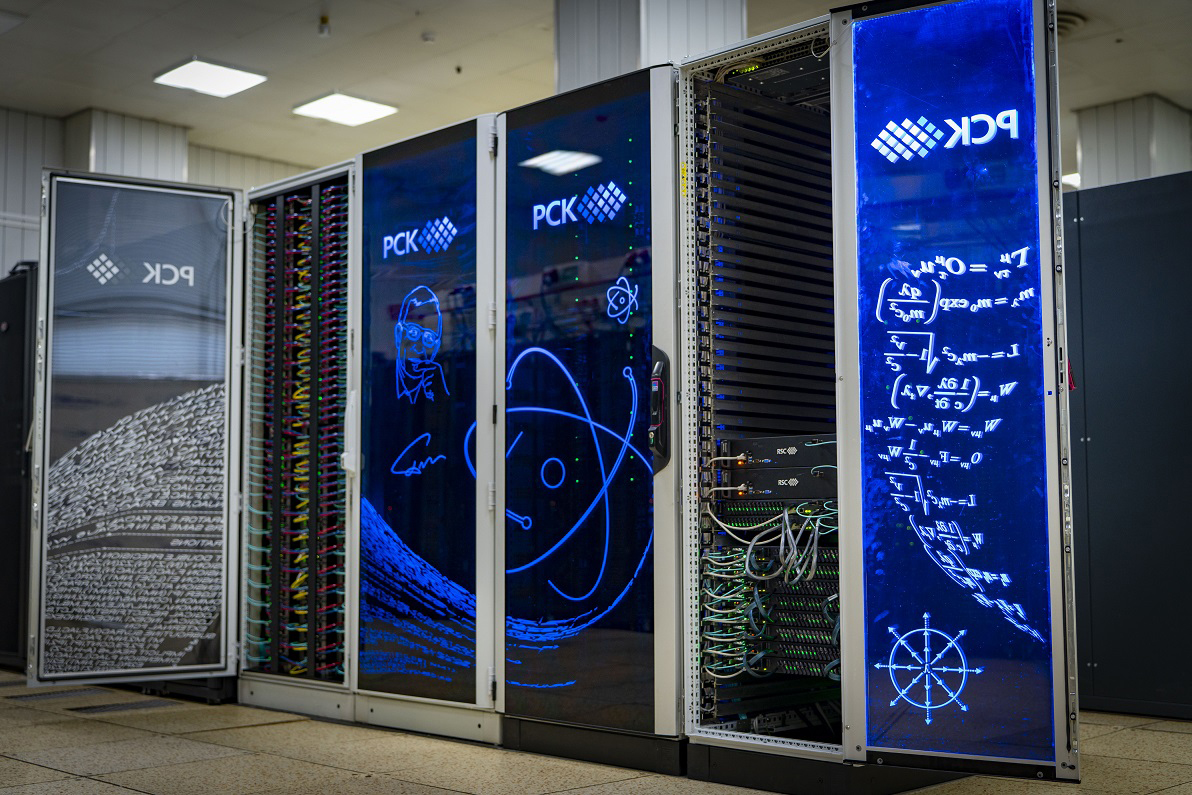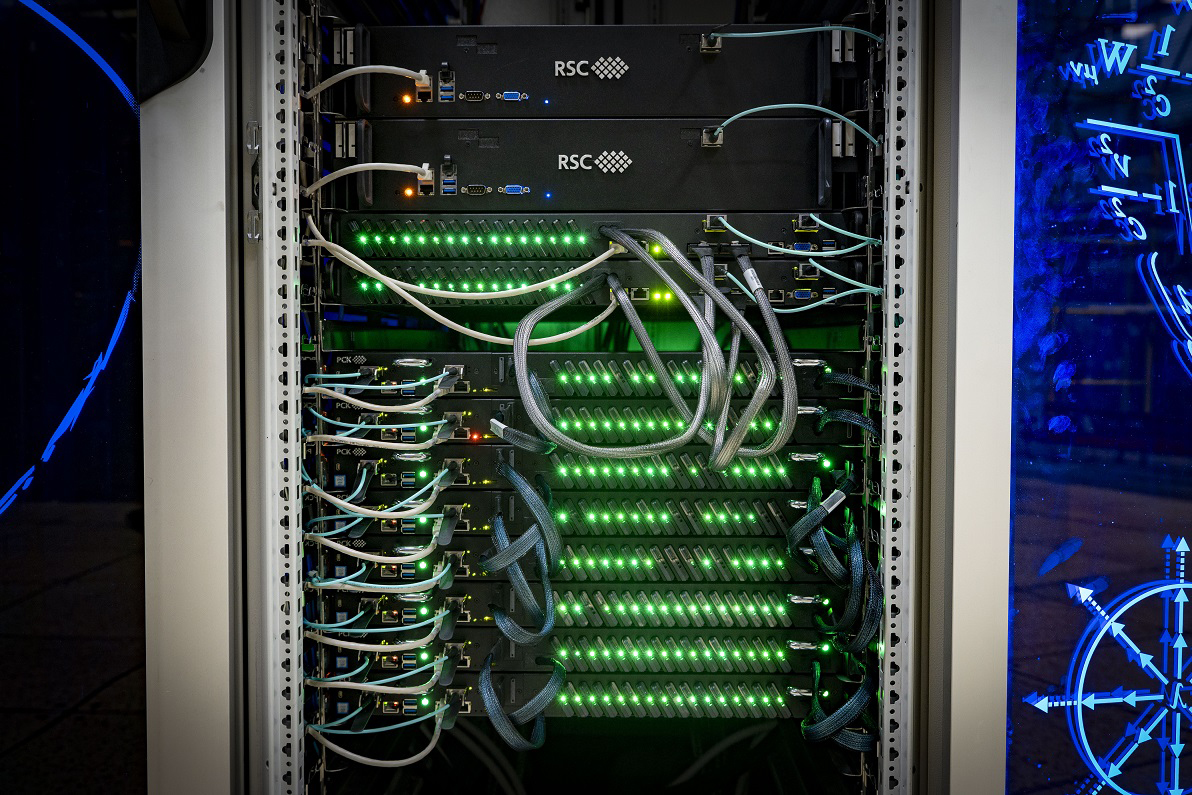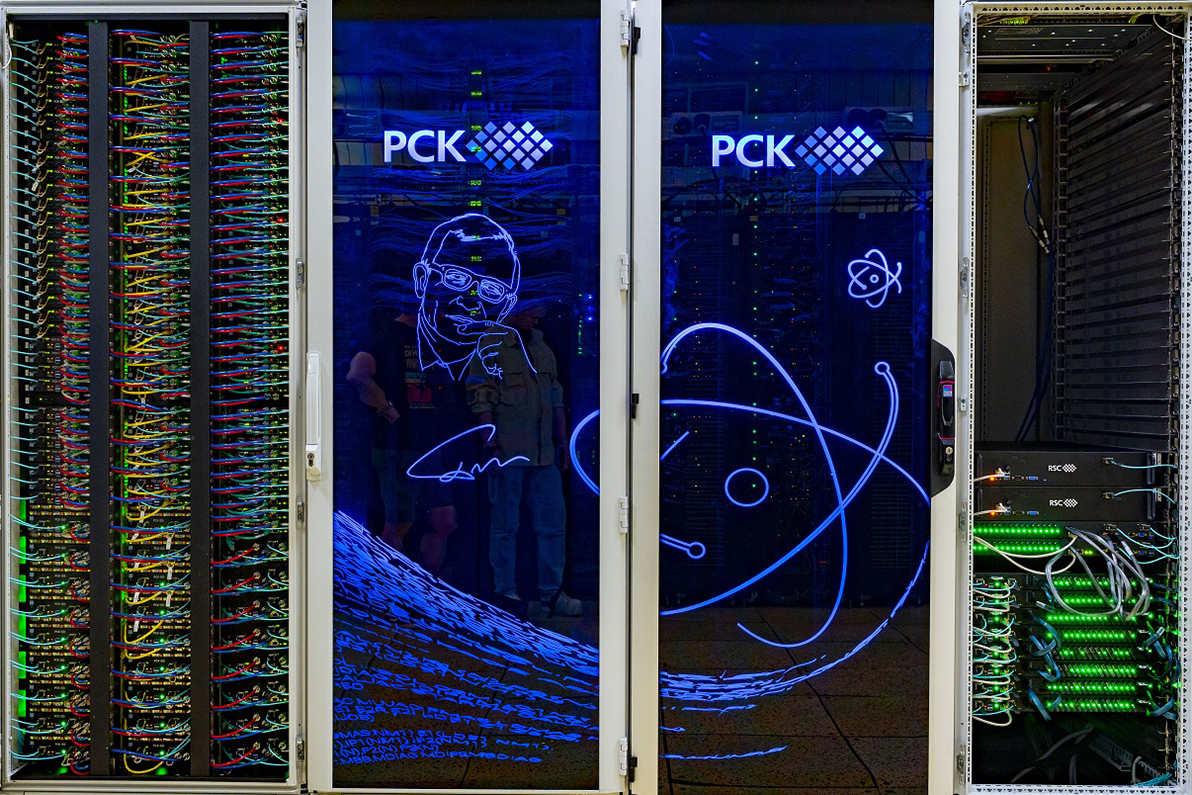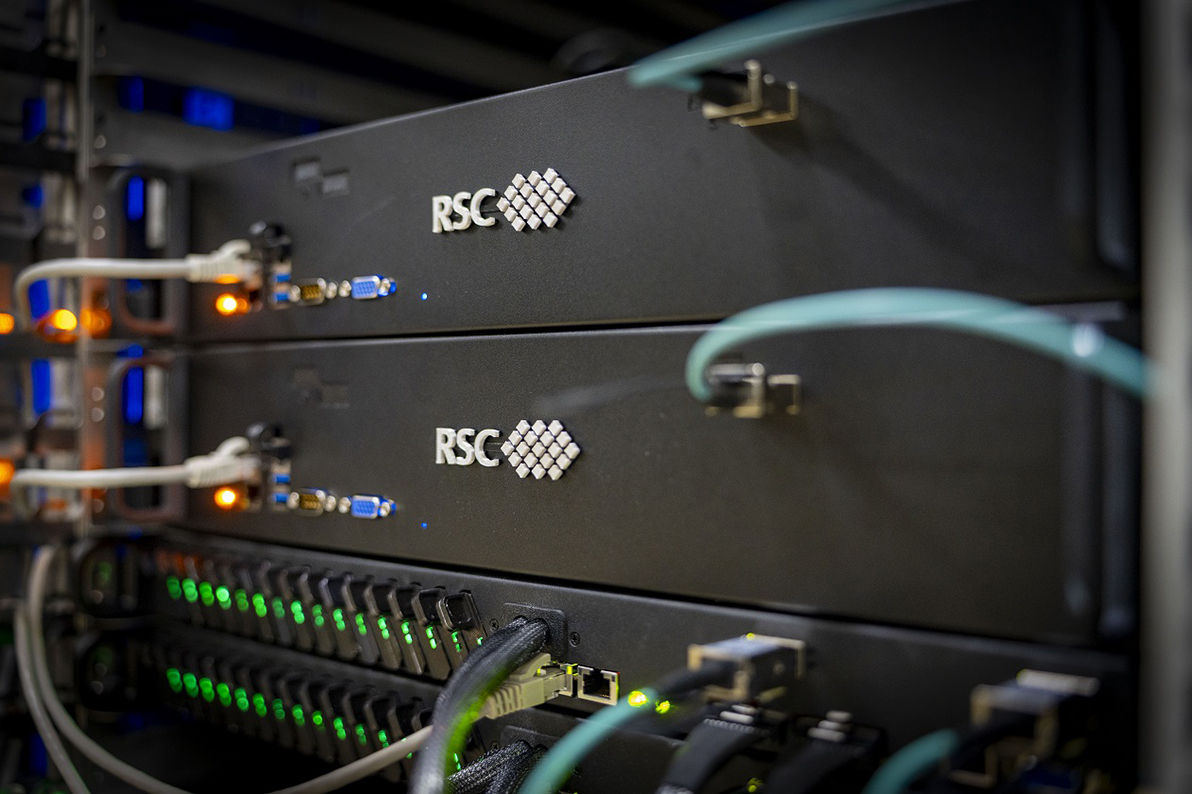Performance of Govorun Supercomputer for AI tasks increased by more than third
News, 08 July 2025
The Govorun Supercomputer at the Joint Institute for Nuclear Research reached a peak performance of 2.2 petaflops (PF) after the next stage of modernisation. The facility was upgraded by the RSC Group of Companies in cooperation with the Meshcheryakov Laboratory of Information Technologies. The installation of new equipment opens up broad opportunities for the introduction of machine learning methods into the Institute’s research programme.
This performance increase was made possible by the integration of two new computing nodes based on the unique RSC Exastrim AI liquid-cooled node engineered for Govorun and its architectural characteristics. Each node contains eight NVIDIA H100 graphics accelerators. As a result, the peak performance of Govorun’s graphics processing unit (GPU) increased by 36%, with its double precision performance reaching 1.4 PF. The complex’s total capacity is 2.2 PF.
“The RSC Exastrim AI servers, installed in the Govorun Supercomputer, are a modern modular hardware and software platform for high-performance computing, aimed at solving scientific and engineering problems using artificial intelligence technologies. We believe that this will facilitate wider and more intensive use of various deep learning algorithms in the JINR research programmes,” Sergei Shmatov emphasised.
Configuration of the RSC Exastrim AI servers installed at JINR:
- node height: 2U,
- two Intel Xeon Platinum 8468 processors (4th generation, 48 cores, frequency 2.1–3.8 GHz, cache 105 MB),
- 8 NVIDIA H100 graphics accelerators (PCIe, 80 GB),
- 1 TB of RAM,
- NVMe SSD drives with 16 TB of storage capacity,
- 4 power supply units manufactured by the RSC,
- direct liquid cooling system developed by the RSC.
In parallel with increasing the computing power, specialists significantly expanded the storage area network (SAN) of the Govorun Supercomputer. At the end of 2024, its total capacity increased by 25%, reaching 10 petabytes (PB), thanks to the addition of two new RSC Tornado AFS nodes with a capacity of 1 PB each. An important feature of the nodes is their compatibility with the GPUDirect Storage (GDS) technology, which provides direct data transfer between storage and GPU memory.
“The flexible configuration system implemented in the RSC Tornado SAN utilising the RSC Database SAN module allows us to maximise the efficiency of using the Govorun Supercomputer’s resources to solve the wide range of tasks the Institute is facing. These tasks may require both high speed for the output or input of large chunks of data and handling many requests to small chunks of data. In particular, two new RSC Tornado AFS servers are already used for the Lustre distributed file system to work with data from the NICA Megascience Project,” MLIT JINR Scientific Leader Vladimir Korenkov said.
Increasing computing capacities and expanding data storage of the Govorun Supercomputer is necessary to accelerate complex theoretical and experimental research in high energy, nuclear, and condensed matter physics. This is particularly important for the implementation of the NICA Megascience Project. The unique accelerator complex of the Veksler and Baldin Laboratory of High Energy Physics will allow scientists to recreate a special state of matter called quark-gluon plasma that was our Universe in the first moments after the Big Bang.
The Govorun Supercomputer is the world’s first hyperconverged complex for high-performance computing with 100% hot-water liquid cooling, created by specialists from MLIT JINR and the RSC Group of Companies in 2018. Several stages of its modernisation are completed. Building a hyperconverged system is based on pooling resources for computing and storage at each node of the system. This allows optimising the scaling of the total system resources while increasing in the number of nodes.
The RSC Group of Companies is a leading Russian developer and integrator of a “full-cycle” innovative ultra-dense, scalable, energy-efficient hyperconverged solutions for supercomputers and high-performance computing (HPC), data processing centres, intelligent on-demand data storage systems based on various processor architectures, and advanced liquid cooling, along with the group’s many innovations.



